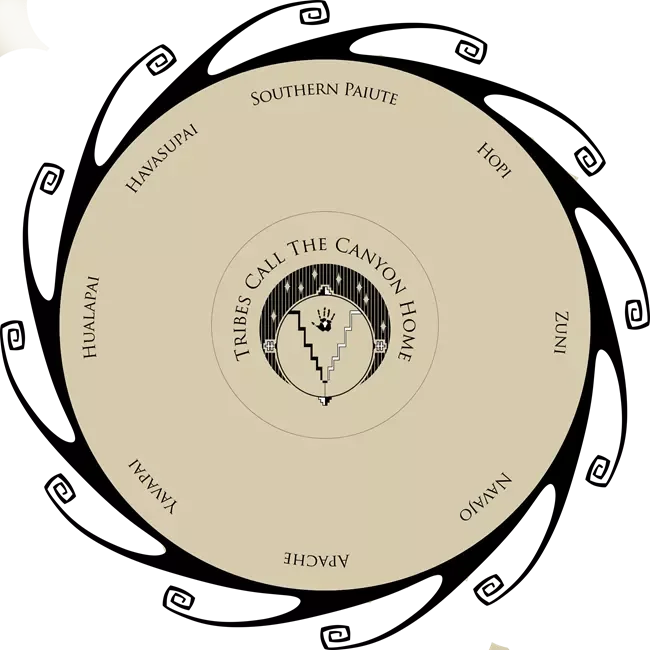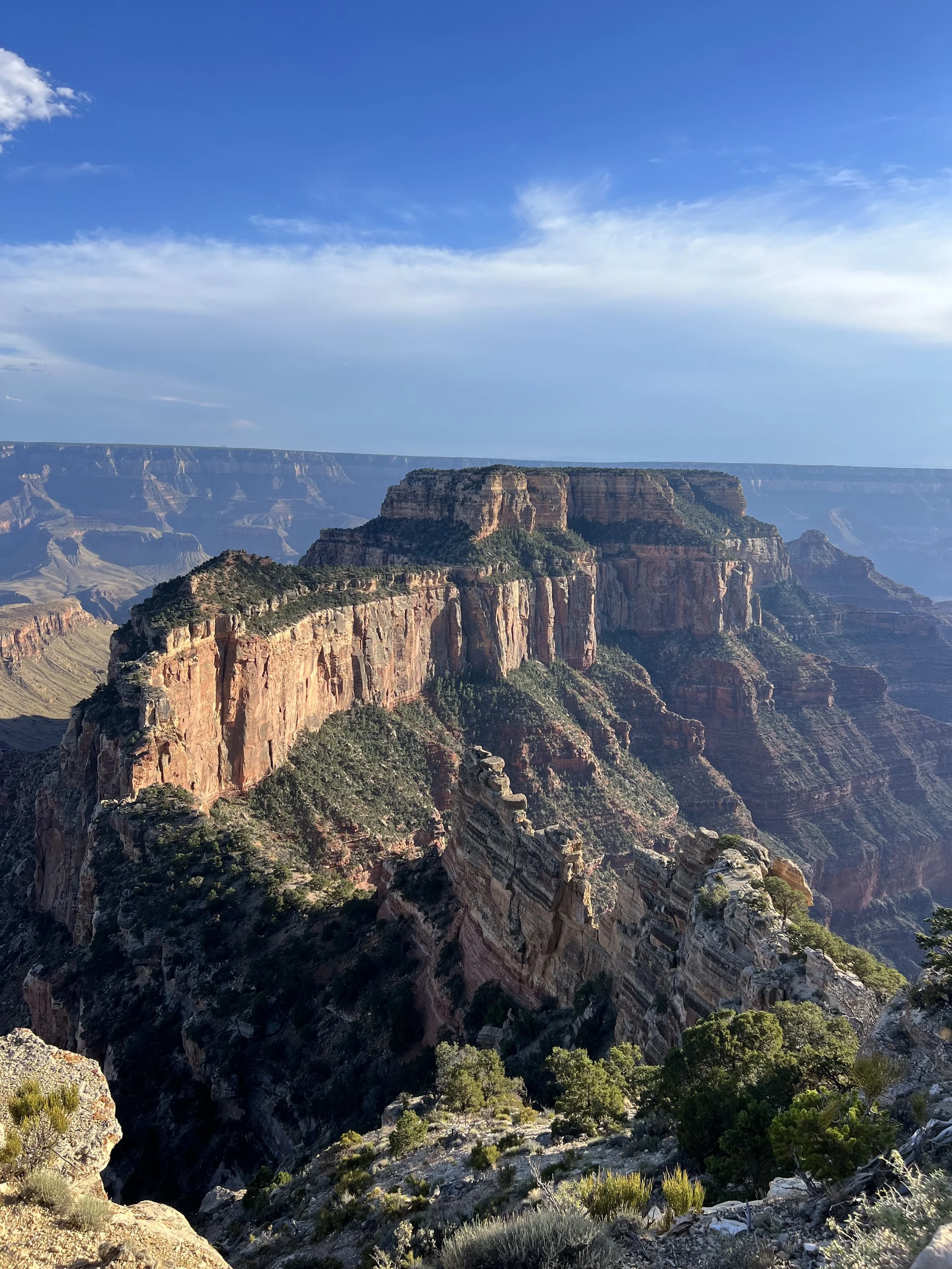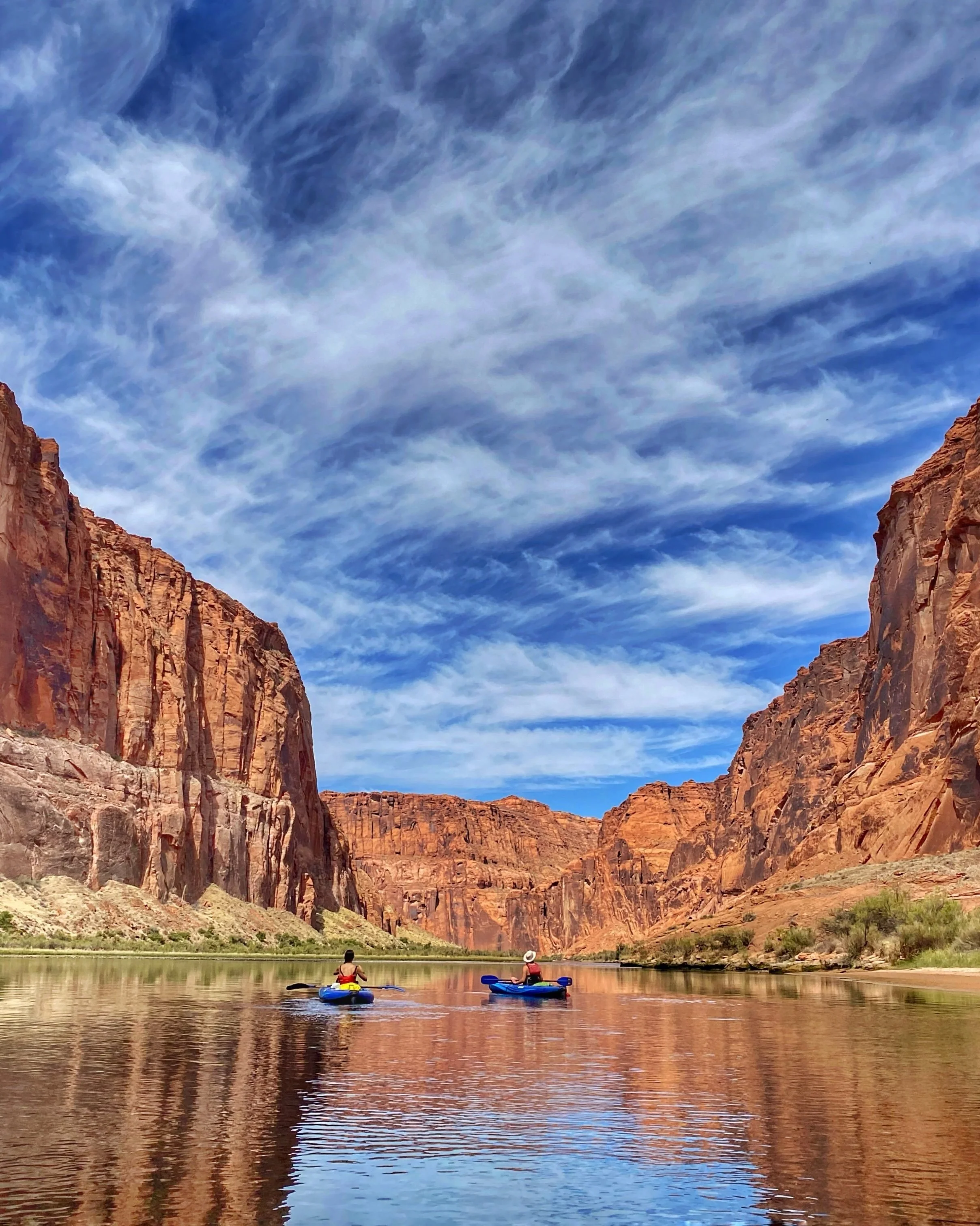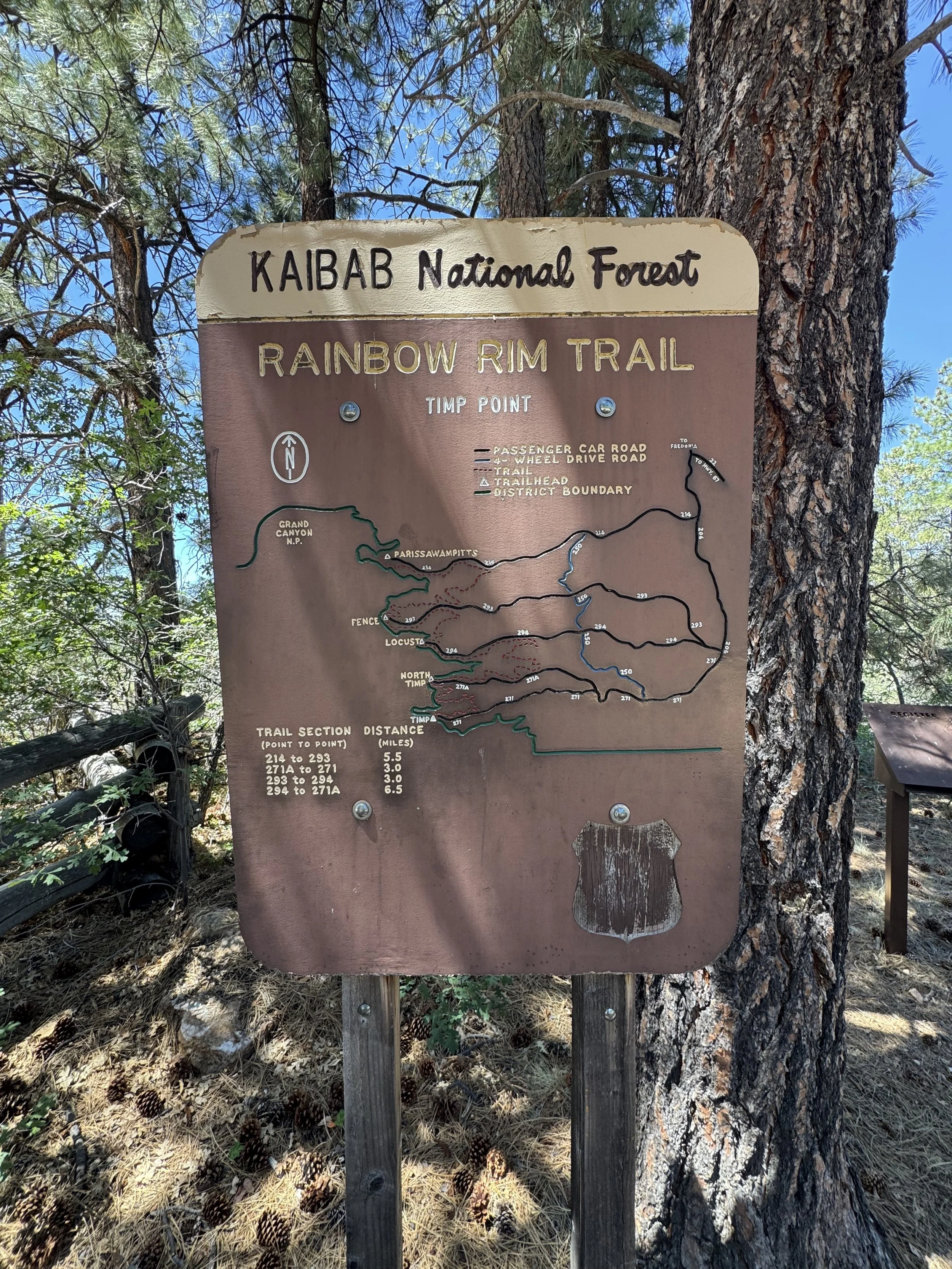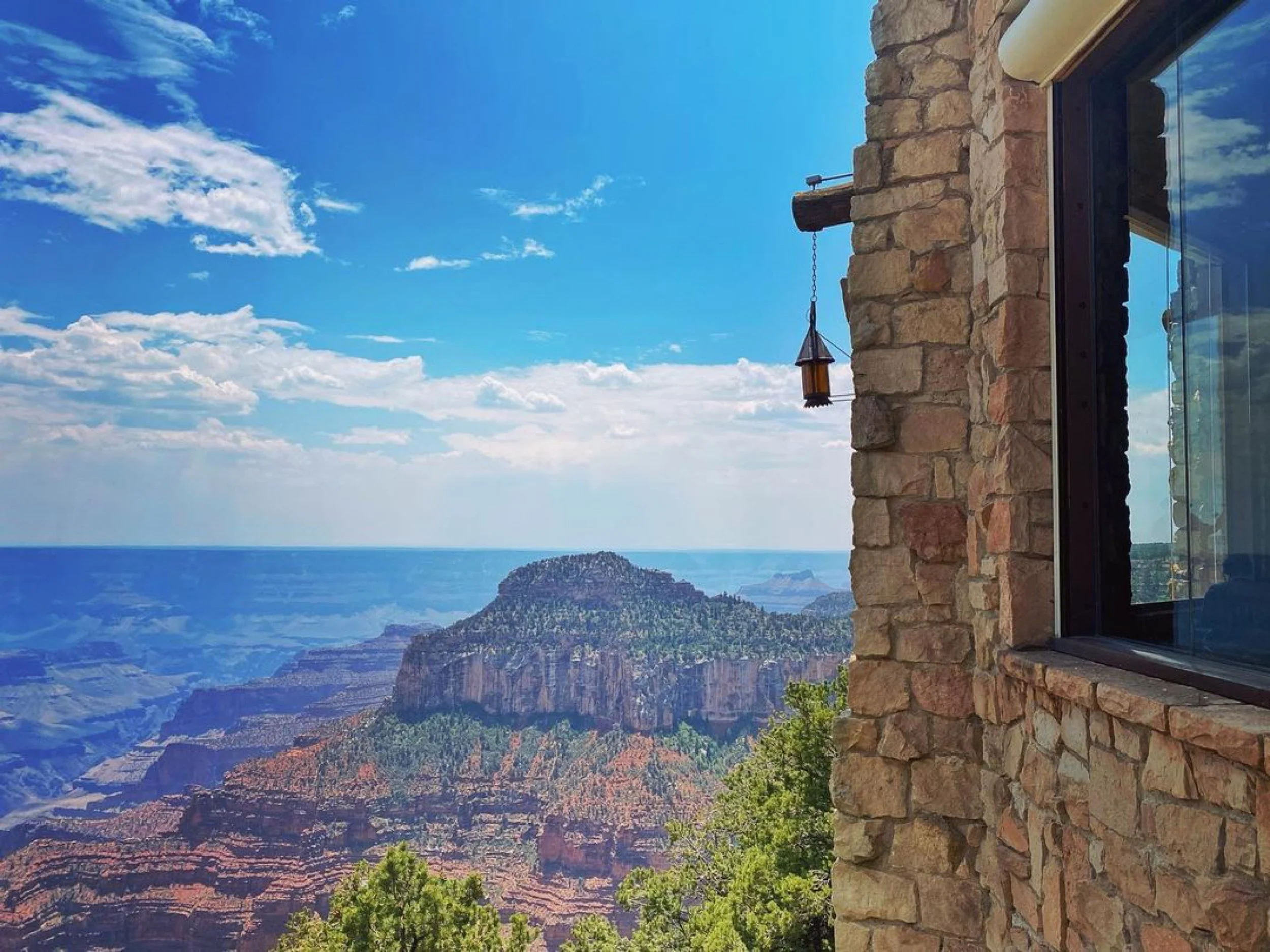The North Rim Is Closed, But the Adventure Isn’t
Your Guide on Experiencing the Grand Canyon Beyond the North Rim
What’s Happened, What’s Happening, and Why Your Visit Matters
The Dragon Bravo Fire, ignited by lightning on July 4, 2025, tore through the North Rim’s developed area on July 13th. It consumed the historic lodge, visitor center, gas station, wastewater treatment plant, administrative buildings, and employee housing. Built in the 1920s and rebuilt after a 1930s fire, the lodge stood as a gateway to one of the quietest and most awe-inspiring corners of Grand Canyon National Park. Its loss is painful for our park community, for generations of returning visitors, and for the small local towns whose summers are shaped by North Rim traffic.
As of late July, the fire remains active. With more than 105,000 acres burned, it is now the tenth-largest wildfire in Arizona's history. Containment remains minimal, and hot, dry conditions continue to challenge suppression efforts. It’s critically important that all visitors and residents follow fire restrictions, check current conditions, and recreate responsibly. For real-time maps and updates, visit the Dragon Bravo Fire InciWeb page.
Before we jump into this blog, the team at BaseCamp 37° wants to share our gratitude. To start, we are profoundly thankful for the firefighters, hotshot crews, helicopter teams, and support personnel working to protect both people and the landscape. Their efforts have made a meaningful difference, especially in areas where the fire has moved into more manageable terrain. Thanks to their tireless work, Kaibab Lodge, the North Rim Country Store, and Jacob Lake Inn have so far been spared. In a season full of hard losses, those saves matter deeply.
In addition, many of us know that this land holds more than just history and beautiful vistas–it’s sacred. The Grand Canyon is the ancestral homeland of many Tribal Nations, including the Havasupai Tribe, Hopi Tribe, Hualapai Tribe, Kaibab Band of Paiute Indians, Las Vegas Band of Paiute Indians, Moapa Band of Paiute Indians, Navajo Nation, Paiute Indian Tribe of Utah, San Juan Southern Paiute Tribe, Pueblo of Zuni, and Yavapai-Apache Nation. Fire in this place doesn’t just impact trails or park facilities. It touches sacred sites, cultural landscapes, and places of living importance to Indigenous communities. That loss deserves recognition and respect.
But the Grand Canyon’s story does not end here. Grand Canyon National Park stretches across more than a million acres. The North Rim, while beloved, is just one part of a much larger landscape. Your trip doesn’t need to be canceled—it can be redirected, and still be deeply rewarding. Many incredible parts in or near the park remain open and accessible.
What to Do Instead? Some of Our Favorite Adventures
Even with the North Rim’s developed area closed, you can still stand at the edge, paddle beneath the cliffs, and hike through ancient rock. Many parts of Grand Canyon National Park, and the broader Colorado Plateau, remain open and thriving.
Here are some of our favorite alternatives:
Visit the North Rim’s Cape Royal Road
Location: North Rim of Grand Canyon National Park
Season: Spring, Summer, and Fall (Note: Open areas will remain accessible through Nov. 30, 2025, or until the first major snowfall, whichever occurs first.)
We are thrilled to share that parts of the North Rim have started to reopen after the Dragon Bravo Fire. We want to express our gratitude to everyone at the National Park Service who has worked to make this possible. Here are the trails and vistas that are now OPEN on the Grand Canyon’s North Rim
Cape Royal Trail: 1+ mile round trip, including a stop at Angel’s Window.
Cliff Spring Trail: 1 mile round trip with archaeological sites, rock outcrops, and stunning views.
Cape Final Trail: 4.2 miles round trip, and one of our favorite day hiking trails in the park.
Roosevelt Point: A short stroll to a stunning vista looking east towards the Little Colorado River.
Walhalla Overlook: A short stroll to dramatic views of the Echo Cliffs and the Painted Desert.
Kayak Glen Canyon to Lee’s Ferry
Location: Glen Canyon National Recreation Area
Season: Spring, Summer, and Fall
This is a river adventure you won’t forget, and it’s at the doorstep of Grand Canyon National Park. Rent a kayak and use a backhaul service from Kayak Horseshoe Bend (click for discount code) to paddle through the towering sandstone walls of Glen Canyon. This stretch flows through Horseshoe Bend, offering up-close views of dramatic cliffs, hidden beaches, petroglyphs, and the mighty Colorado River.
Bring lunch, water, sunscreen, and a sense of awe.
Hike Cathedral Wash
Location: Grand Canyon National Park & Glen Canyon National Recreation Area
Season: Fall, Winter, and Spring
Scramble through one of the Southwest’s most iconic slot canyons to the Colorado River. Tucked into Lee’s Ferry, where Glen Canyon and the Grand Canyon meet, Cathedral Wash is a short but rewarding adventure with minor route-finding that will take you deeper and deeper into the Kaibab Limestone and Toroweap Formations until ending at the river, where canyon debris created Cathedral Wash Rapid.
Avoid during flash flood conditions and hike early or late to beat the heat.
Bonus stop: Visit the Lonely Dell Ranch & Orchard, or check out the start of commercial rafting season at Lee’s Ferry, the official beginning of all 270-mile Grand Canyon river trips.
Visit Toroweap (Tuweep) Overlook
Location: Grand Canyon National Park
Season: Year-round
If you want a view that leaves you speechless, Toroweap is it. With a 3,000-foot vertical drop to the Colorado River, this remote overlook offers raw exposure, ancient lava flows, and no crowds. It's one of the most stunning points in the entire park.
Access requires a high-clearance vehicle and self-sufficiency—or go with a guide like All Ways Adventure (click for discount code) for a safe, fun, and educational day trip.
While you’re there, explore:
Toroweap Overlook: Stroll to one of the most dramatic vistas in the Grand Canyon
Tuckup Trail: 70 miles of slickrock and solitude with access points from Toroweap
Saddle Horse Loop: A short hike with canyon views and unique desert ecosystems
Rainbow Rim Trail
Location: North Kaibab National Forest
Season: Spring, Summer, and Fall
The 27.5-mile Rainbow Rim Trail links five stunning canyon viewpoints: Parissawampitts, Fence, Locust, North Timp, and Timp, each offering a new perspective of the Grand Canyon’s vastness. Travel by bike or foot through ponderosa forests, wildflower meadows, and aspen groves.
Choose a small section to hike out and back or get out on your bike to rip some of the best trails in the Southwest.
Note: this area has just reopened. Please check the US Forest Service website for updates on which roads are open and closed near the Dragon Bravo fire.
Bill Hall Trail
Location: North Kaibab National Forest & Grand Canyon National Park
Season: Spring, Summer, and Fall
The Bill Hall Trailhead is one of many backcountry trailheads along the North Rim of the Grand Canyon. From here, you can do multi-day hikes down to Thunder River, Tapeats Creek, and Deer Creek Narrows. Please note that the majority of the North Kaibab National Forest is inaccessible in the winter due to snow.
For a day hike, we like these two options:
Bill Hall Trail to Monument Point: 2 miles round trip along the rim of the Grand Canyon with stunning vistas at each point.
Bill Hall Trail to Thunder River Trail: Although the Bill Hall Trail connects to trails that will take you all the way to the canyon floor, you can do a day hike by heading down into the canyon until you reach the Thunder River Trail junction. This 5+ mile trail is rugged and remote.
Support the North Rim and our Local Community
We’ll be blunt: your visit matters. Tourism is the backbone of our region. As Kane County Tourism Director Jeanette Peatross shared, “We rank number four in the state when it comes to counties most reliant on tourism. Roughly 1,600 jobs here depend on it, so this is a big deal.” Nearly 5 million vehicles pass through each year. With the North Rim closed through the end of 2025, many local businesses are losing a critical season of summer and fall visitors.
Here’s what you can do to support the park and our wonderful community:
Donate to the North Rim Recovery Fund. The Grand Canyon Conservancy is one of many organizations and individuals supporting recovery efforts for the North Rim. Your donation helps support trail restoration, infrastructure repairs, and resources for park staff and community members impacted by the fire.
Buy Cookies at the Jacob Lake Inn. In addition to the North Rim being closed, the entire North Kaibab National Forest is closed, which has a profound impact on the community of Jacob Lake. The Kaibab National Forest is home to canyons, prairies, and peaks, and is a go-to spot for locals and tourists for summertime hiking, camping, and wildlife viewing.
Glamp at BaseCamp 37° in 2025. If you’re planning a trip to the region, thank you! Your visit makes a real difference to our small community and our neighbors. As a reminder, our Sunset Special is live now through the end of August. You can save $50 on any two-night stay, and you get an extra $50 for each additional night. Book direct to snag this discount, and as always, we can’t wait to be part of your adventure.
We lost something real when the North Rim burned. But this place still holds so much beauty, connection, and meaning, especially when shared. The Grand Canyon is still here. The people who love and care for it are still here. And we hope you will be too.
Thanks for showing up and supporting our community.
- Your BaseCamp 37° Team


